Holbeton
Holbeton is a civil parish and village located 9 miles south east of Plymouth in the South Hams district of Devon, England. Historically it formed part of Ermington Hundred. To the east of the village is an Iron Age enclosure or hill fort known as Holbury.
| Holbeton | |
|---|---|
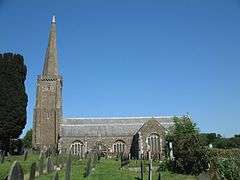 All Saints Church, Holbeton | |
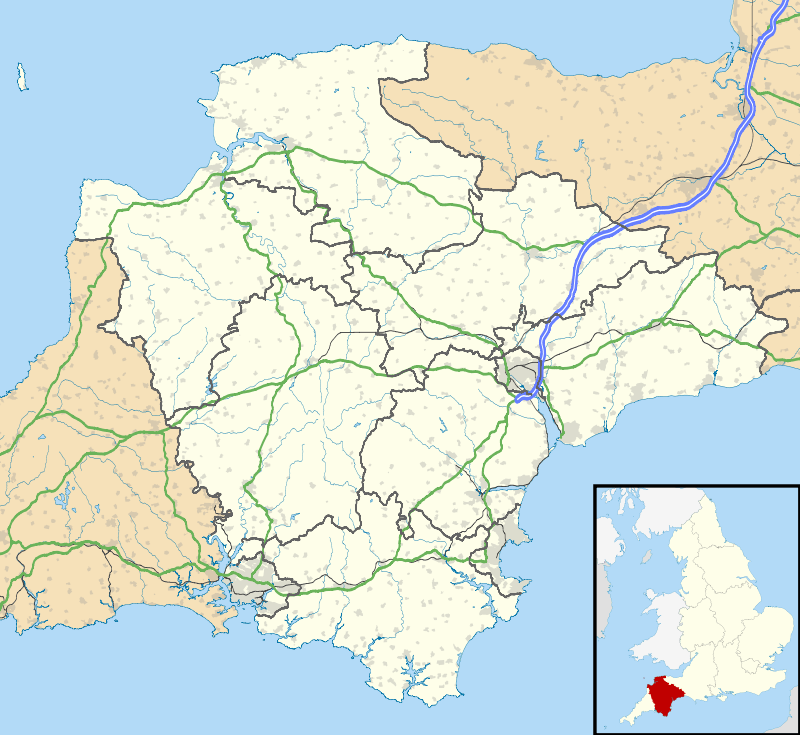 Holbeton Location within Devon | |
| Population | 619 (2011)[1] |
| OS grid reference | SX6150 |
| Civil parish |
|
| District | |
| Shire county | |
| Region | |
| Country | England |
| Sovereign state | United Kingdom |
| Post town | PLYMOUTH |
| Postcode district | PL8 |
| Dialling code | 01752 |
| Police | Devon and Cornwall |
| Fire | Devon and Somerset |
| Ambulance | South Western |
| UK Parliament | |
Holbeton is a considerable village set back from the wooded shores of the River Erme estuary.
The hamlet of Ford, Devon is within the parish to the north of Holbeton village.
Historic estates
The parish of Holbeton contains several historic estates including:
Flete
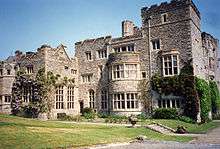
Flete House is situated in a large park and was formerly the seat of Baron Mildmay of Flete and is now converted into apartments. Flete owes its present character to the architect Norman Shaw who remodelled it extensively from 1878 onwards. He built the great tower on the north front, rebuilt the north-west wing, and altered the interior to put in "over-rich Tudor". The house had already been remodelled in the Gothic style in 1835, and the front is all of this date.
Mothecombe
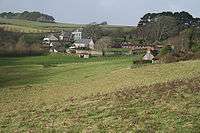
The estate of Mothecombe was a seat of a junior branch of the Pollexfen family of Kitley, Yealmpton.[2] The mansion house was built by John Pollexfen circa 1710-20.[3] In 1872 it was acquired by Henry Bingham Mildmay (of Barings Bank[4]) who 4 years later in 1876 also acquired Flete, in the same parish of Holbeton, the ancestral home of his wife Georgiana Bulteel, which had been sold in 1863 by her brother to an Australian sheep farmer.[5]
Adeston
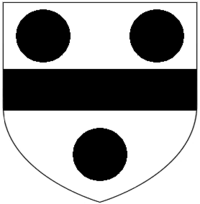
Adeston in the parish of Holbeton was held by the de Adeston family, the armorials of which were: Argent, a fess between three pellets.[7] The last in the male line was Gilbert de Adeston, who died during the reign of King Edward III (1327-1377) and left a daughter and sole heiress Jone de Adeston, who married John Prideaux, a younger son of Sir Roger Prideaux of Orcherton. Adeston remained in the Prideaux family of Theuborough in the parish of Sutcombe, Devon, until sold by "Richard Prideaux of Theuborough" (probably Richard Prideaux (d.1617)[8] or his father Richard Prideaux (d.1603)) to Thomas Hele (d.1613) of Fleet, Sheriff of Devon 1600-1.[9]
Holbeton today
The local primary school takes the majority of the local children. The village hall and playing fields are host to many activities including school plays, festivals, and sports events.
References
- "Parish population 2011". Retrieved 6 April 2015.
- Vivian, Lt.Col. J.L., (Ed.) The Visitations of the County of Devon: Comprising the Heralds' Visitations of 1531, 1564 & 1620, Exeter, 1895, p.600, pedigree of Pollexfen
- Pevsner, Nikolaus & Cherry, Bridget, The Buildings of England: Devon, London, 2004, pp.85, 581
- Pevsner, p.450
- Pevsner, pp.581,450
- Pole, p.467
- Pole, p.467
- See History of Parliament biography of his son Jonathan Prideaux (d.1637), MP
- Pole, Sir William (d.1635), Collections Towards a Description of the County of Devon, Sir John-William de la Pole (ed.), London, 1791, pp.308-9; Vivian, Lt.Col. J.L., (Ed.) The Visitations of the County of Devon: Comprising the Heralds' Visitations of 1531, 1564 & 1620, Exeter, 1895, pp.464,466, pedigree of Hele
| Wikimedia Commons has media related to Holbeton. |